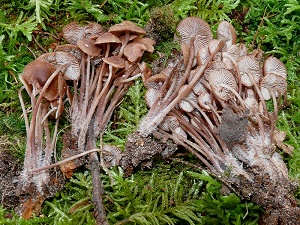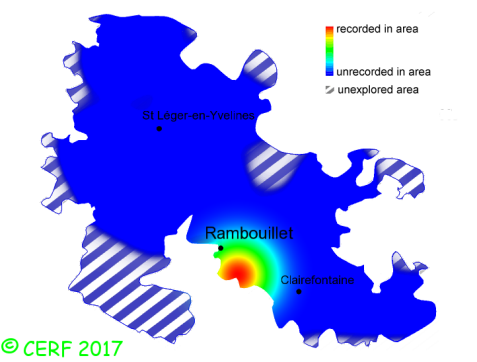| Mycena haematopus (Pers.:Fr.) P. Kumm. |
|
|
|
|
|
|
The cap is yellowish to flesh pink, with a central umbo. The cap surface is smooth, not viscid nor sticky. The stem is greyish pink, without ring. The flesh is blood red, unchanging; its taste is bitter; the odour is not distinctive; its texture is fibrous, exuding when cut a reddish latex. The gills are white to pink, adnate, distant . The spore print is white. This species is saprophytic. It grows on dead wood. The fruiting period takes place from April to November.
Chemical tests : none. Distinctive features : stem exuding blood-red latex when cut; in tufts on dead deciduous wood Mycena haematopus is rare and confined in the forest of Rambouillet, and is occasional, more generally speaking . | ||
|
page updated on 14/01/18

